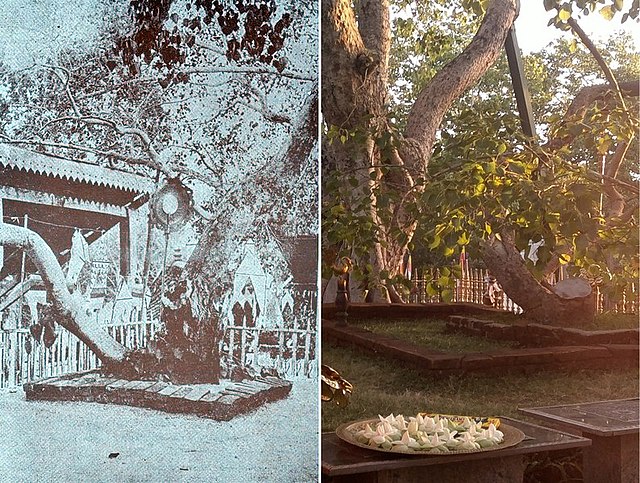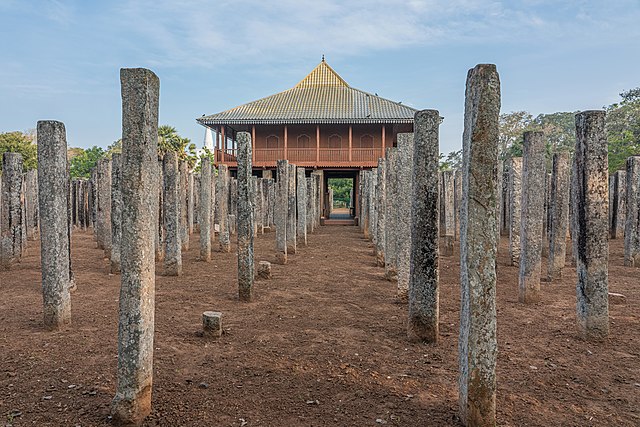Atamasthana or Eight sacred places are a series of locations in Sri Lanka where the Buddha had visited during his three visits to the country. The sacred places are known as Jaya Sri Maha Bodhiya, Ruwanwelisaya, Thuparamaya, Lovamahapaya, Abhayagiri Dagaba, Jetavanarama, Mirisaveti Stupa and Lankarama. They are situated in Anuradhapura, the capital of the ancient Anuradhapura Kingdom.
Jaya Sri Maha Bodhi, Anuradhapura, Sri Lanka. The oldest living tree in the documented history of the world.
Ruwanwelisaya Chedi in the sacred city of Anuradhapura, Sri Lanka.
Thuparamaya dageba in Anuradhapura.
Lovamahapaya
Jaya Sri Maha Bodhi is a historical sacred bo tree in the Mahamewuna Garden in historical city of Anuradhapura, Sri Lanka. This is believed to be a tree grown from a cutting of the southern branch from the historical sacred bo tree, Sri Maha Bodhi, which was destroyed during the time of Emperor Ashoka the Great, at Buddha Gaya in India, under which Siddhartha Gautama (Buddha) attained Enlightenment. The Buddhist nun Sangamitta Maha Theri, a daughter of Indian Emperor Ashoka, in 236 BC, brought the tree cutting to Sri Lanka during the reign of Sinhalese King Devanampiya Tissa.[1] At more than 2,300 years old, it is the oldest living human-planted tree in the world with a known planting date. The Mahavamsa, or the great chronicle of the Sinhalese, provides an elaborate account of the establishment of the Jaya Siri Maha Bodhi on the Island and the subsequent development of the site as a major Buddhist pilgrimage site.
Sacred Bodhi before c. 1913 and in the recent past.
A wall Painting the Aluth Vihara Ge or the New Image House at Kelaniya Temple, Sri Lanka. Sangamitta Maha Theri bringing the sapling of the Sri Maha Bodhi to Sri Lanka. Wall painting by Solias Mendis. The murals are those of the 18th century and the early 20th century.
A Photo taken from the Lower Compound, Pahatha Maluwa
Buddha Śākyamuni. Dolomite marble. Height: 3.3 meters. Late Anurādhapura Period, circa 6th century. Śrī Mahā Bodhi Shrine at the Mahāvihāra complex at Anurādhapura. (Photo: Captain J. R. Hogg, 1895).







